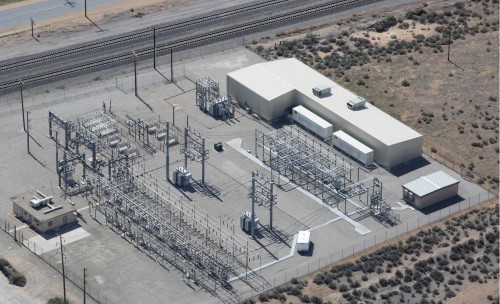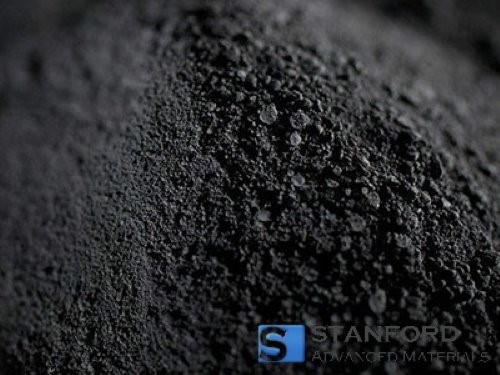Case Study: Lithium Iron Phosphate Powder For Energy Storage And Batteries
Introduction
Lithium iron phosphate powder (LiFePO4 or LFP) has been developed as an important material in the field of energy storage and batteries. Owing to its defined chemical properties, LiFePO4 has been employed in the integration of renewable energy, electric vehicles and portable electronic devices. This article discusses these applications and aims to provide a better understanding of the characteristics and uses of LiFePO4 powder.

Figure 1. Energy storage project
What is Lithium Iron Phosphate Powder?
Lithium iron phosphate (LFP) is an inorganic compound with the chemical formula LiFePO4. It appears as a grey, reddish-grey, brown or black solid that is insoluble in water. This material is a key component in the manufacture of lithium iron phosphate batteries. This battery chemistry is used in electric vehicles, solar energy systems and large-scale grid energy storage.

Figure 2. Lithium iron phosphate powder
How is Lithium Iron Phosphate Powder used in Energy Storage and Batteries?
Based on its defined physical and chemical properties, lithium iron phosphate powder is preferred in a range of applications, particularly in energy storage and battery systems. The following outlines its utilisation in these areas:
Renewable Energy Storage: LiFePO4 batteries are increasingly used to store energy generated from renewable sources, for example solar or wind power, thereby ensuring a steady and reliable supply of electricity.
Electric Vehicles (EVs): The automotive sector has adopted LiFePO4 batteries for electric vehicles, thereby balancing safety, durability and performance.
Portable Electronic Devices: The stable battery chemistry and extended cycle life of LiFePO4 make it a suitable option for powering portable electronic devices such as laptops, smartphones and power banks.
Case Study: Lithium Iron Phosphate Powder for Energy Storage and Batteries
The Challenge
A customer considered the purchase of lithium iron phosphate powder for use in lithium-based electronic batteries. As a long-term partner, SAM provided the following strategic recommendations. These recommendations included factors to optimise battery efficiency and overall performance.
The Solution
Particle Size: It is recommended to select a finer lithium iron phosphate powder, typically with a particle diameter of 1–10 microns. Finer particles can increase the reaction rate and enhance charging and discharging efficiency.
Crystal Type: LiFePO4 may occur in various crystal types, such as the orthorhombic (OLP) or monoclinic (MLP) forms. Therefore, the appropriate crystal type should be selected based on the specified performance requirements and the processing methodology.
Ultra-fine LiFePO4 Powder: Ultra-fine LiFePO4 powder has a higher specific surface area that offers additional reactive sites, thereby increasing the energy density and extending the battery’s lifespan.
Uniform Composition: Powder with a uniform composition and minimal impurity content is preferred. The high purity of the powder ensures consistent battery performance.
Results
By considering factors such as particle size, crystal type, ultra-fine grade and uniform composition, the customer can select lithium-based electronic batteries that offer improved efficiency, higher energy density and a longer cycle life.
Conclusion
In summary, lithium iron phosphate powder is a viable material in the fields of energy storage and batteries. Its safety, stability and extended cycle life have made it an important product for renewable energy utilisation, electric vehicles and various portable and stationary applications. Given that the energy sector is continually evolving, the role of LiFePO4 in future energy supply remains significant and promising.
Stanford Advanced Materials (SAM) supplies lithium iron phosphate powder in various sizes and purities. Custom modifications are also available. Please contact us to request further information.

 Bars
Bars
 Beads & Spheres
Beads & Spheres
 Bolts & Nuts
Bolts & Nuts
 Crucibles
Crucibles
 Discs
Discs
 Fibers & Fabrics
Fibers & Fabrics
 Films
Films
 Flake
Flake
 Foams
Foams
 Foil
Foil
 Granules
Granules
 Honeycombs
Honeycombs
 Ink
Ink
 Laminate
Laminate
 Lumps
Lumps
 Meshes
Meshes
 Metallised Film
Metallised Film
 Plate
Plate
 Powders
Powders
 Rod
Rod
 Sheets
Sheets
 Single Crystals
Single Crystals
 Sputtering Target
Sputtering Target
 Tubes
Tubes
 Washer
Washer
 Wires
Wires
 Converters & Calculators
Converters & Calculators
 Chin Trento
Chin Trento



